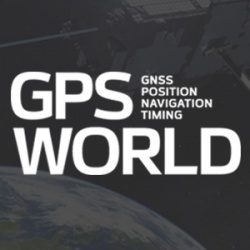

JAVAD GNSS has commented on some news that its receivers can track a new L5 signal from the […]

Javad Ashjaee, founder and CEO of JAVAD GNSS, has filed a letter with the U.S. Federal Communications Commission […]

In late March, I conducted a webinar titled “A Closer Look at L5: The Future of High-Precision GNSS,” in which I discussed the impact that the new GPS L5 signal/frequency may have on high-precision users. Then, in April I was part of a discussion panel-format webinar titled “LightSquared: Our Story So Far.” Many questions and comments arose from both webinars, and I’ll attempt to address those in this column.

Yesterday I conducted a webinar titled “A Closer Look at L5: The Future of High-Precision GNSS.” Preparing for it was quite interesting, so I thought I’d share some of the slides I produced (and had produced) for the webinar. I think you’ll find them interesting.

Letters: The GPS history articles by Brad Parkinson; gifts to L5; Paul Cross, GPS World Advisory Board member, bids Farewell.

A small variance in the L5 signal, which remains well within signal specifications and will not affect pseudorange measurements, may show some impact on triple-frequency combinations of the signal’s carrier phase in high-precision applications. Observations suggest a temperature-dependent line bias in one or more carriers as a likely cause of the observed variation in the tri-carrier combination of L1, L2, and L5.

Researchers at the German Aerospace Center say they have found a small variance in the L5 signal on IIF-1. The signal variation results in no more than a 5-centimeter error with a predictable periodicity of about six hours. The GPS Wing is studying the issue and expects to resolve it before setting the satellite healthy, in another month or so according to the schedule.
Follow Us